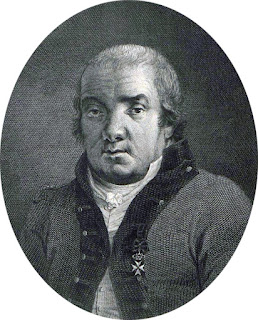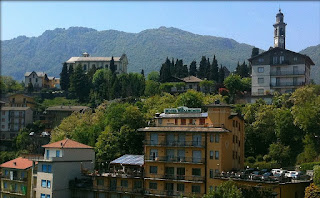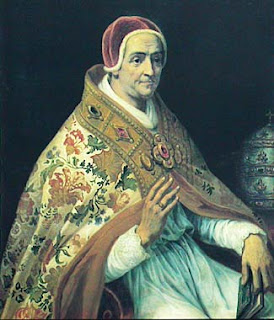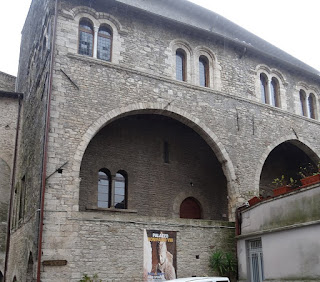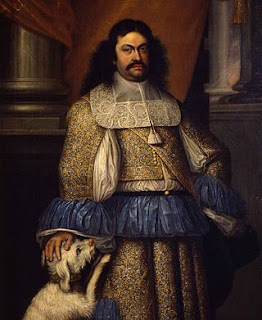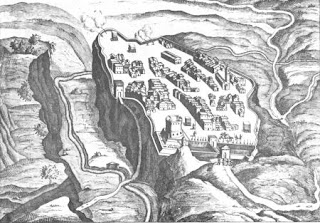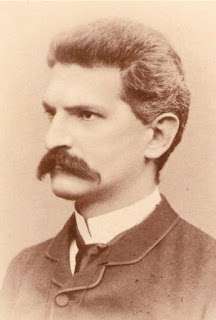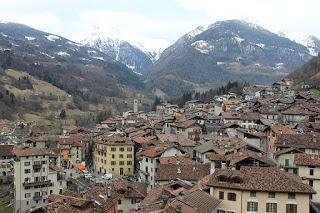Author of ‘Gomorrah’ who lives under police protection
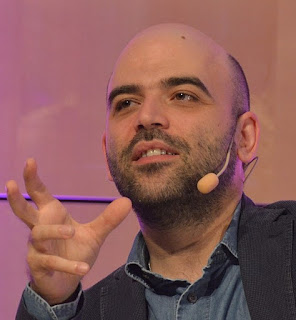 |
| Roberto Saviano has lived under police guard since writing his groundbreaking Mafia exposé, Gomorrah |
Gomorrah was an international bestseller that was turned into a film and inspired a TV series, bringing Saviano fame and wealth.
However, within six months of the book’s publication, Saviano had received so many threats to his life from within the Camorra that the decision was taken on the advice of former prime minister Giuliano Amato to place him under police protection.
Some 12 years later, he remains under 24-hour police guard. He travels only in one of two bullet-proof cars, lives either in police barracks or obscure hotels and is encouraged never to remain in the same place for more than a few days. His protection team includes seven bodyguards.
Saviano has written three more books including a collection of his essays and Zero, Zero, Zero - an exposé of the cocaine trade. His latest, published this week, is called The Piranhas. Whereas Gomorrah and Zero, Zero, Zero were non-fiction, The Piranhas is a novel, though one set in Naples with the Camorra at the centre of the story.
Born the son of a Naples doctor and a mother originally from Liguria, Saviano attended the University of Naples Federico II, where he obtained a degree in psychology. He began his career in journalism in 2002, writing for numerous magazines and daily papers, including the Camorra monitoring unit of the Corriere del Mezzogiorno.
His inspiration for writing Gomorrah came from his own experiences in the province of Caserta, where he grew up, which witnessed a gang war as rival Camorra groups battled for control of territory. Violence on the streets became an almost daily occurrence in full view of ordinary citizens, some of whom became victims themselves when, occasionally, an innocent person was mistaken for a target.
Saviano’s journalism meant that he became acquainted with workers in businesses run by the Camorra, and in time with messengers and look-outs who worked for the clan. He pored over court records, news reports and trial transcripts, eventually pulling together all his knowledge to write Gomorrah.
 |
| Roberto Saviano signing a copy of one of his books |
Saviano revealed details of the System - as the Camorra refer to themselves - never before brought to the public domain. It is written in the style of dramatic fiction but describes events that, Saviano says, actually happened.
This is supported by the reaction of the Camorra, who felt the book revealed details that compromised their activities. The last straw was probably an anti-Mafia demonstration in Casal di Principe in September 2006, when Saviano publicly denounced the bosses of the Casalese clan, Francesco Bidognetti and Francesco Schiavone, both of whom were in prison, as well as the the two ruling bosses at the time, Antonio Iovine and Michele Zagaria, insulting them and calling on them to leave Italy.
After threats to Saviano and members of his family were investigated by the Naples police, Amato, then Minister for Interior Affairs, assigned Saviano a personal bodyguard and moved him from Naples to a secret location.
 |
| Saviano makes speaking engagements around the world, campaigning against organised crime |
For obvious reasons, no one outside his immediate circle knows where he now lives. However, he makes public appearances at speaking engagements and is still writing regularly for many newspapers and magazines at home and abroad, including l'Espresso, la Repubblica in Italy, The Washington Post and The New York Times in the United States, Die Zeit and Der Spiegel in Germany, and The Times and The Guardian in the United Kingdom.
In 2008, six Nobel Prize winners - Dario Fo, Mikhail Gorbachev, Günter Grass, Rita Levi-Montalcini, Orhan Pamuk and Desmond Tutu - launched a joint appeal to the Italian government to do more to defeat the Camorra and to support citizens such as Saviano in speaking out against them.
 |
| The incredible sloping watercourse is one of the features of the Royal Palace in Caserta |
The biggest attraction for visitors to Caserta is the former Royal Palace - Reggia di Caserta - which is one of the largest palaces in Europe, built to rival the palace of Versailles outside Paris, which was the principal residence of the French royal family until the French Revolution of 1789. Constructed for the Bourbon kings of Naples, it was the largest palace and one of the largest buildings erected in Europe during the 18th century and has been described as "the swan song of the spectacular art of the Baroque”.
 |
| A typical street scene in the Quartieri Spagnoli in the heart of Naples |
The area that used to be seen as a notorious Camorra stronghold, the Quartieri Spagnoli - Spanish Quarters - to the north of Via Toledo, is now much less threatening. The area consists of a grid of around narrow 18 streets running south to north by 12 going east to west towards the harbour. It represents a flavour of old Naples, with lines of washing strung across the narrow streets and lively neighbourhood shops catering for the residents, who number about 14,000. Although it is a poor area blighted by high unemployment, the Camorra are less visible here now than in some of the city’s run-down suburbs. The area takes its name from its original purpose in the 16th century, which was to house Spanish garrisons, whose role was to quell revolts from the Neapolitan population.
More reading:
How the capture of Camorra boss Paolo di Lauro struck at the heart of crime in Naples
The Camorra bride who became a mob chieftain after avenging the death of her husband
Dario Fo - the playright who sought out corruption in high places
Also on this day:
1929: The birth of motorcycle world champion Carlo Ubbiati
1958: The birth of singer Andrea Bocelli
Home
